Lipizzaner horses are graceful, intelligent and beautiful horses.
They are a sight to behold whether performing elegant dressage routines or trotting on the beach. They are noble and loyal to their owners and are known for their great temperament.
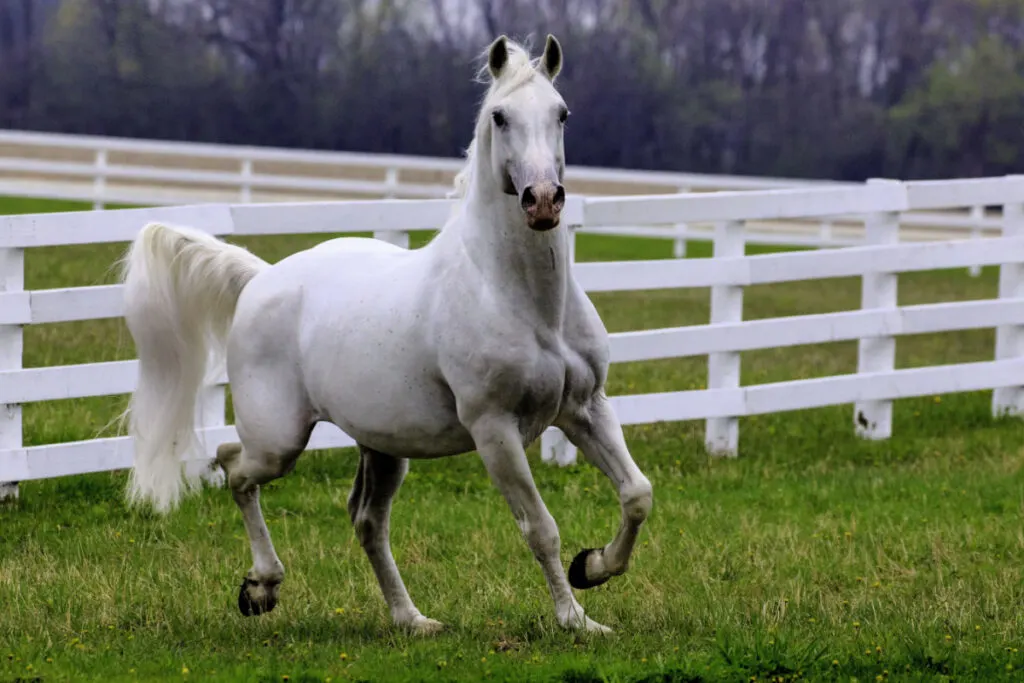
Here are 15 interesting facts about Lipizzaner horses.
Table of Contents
1. They’re world-renowned for their high-flying moves
These alabaster horses are most famous for their haute ecole or airs above ground – intense classical dressage moves that include a series of fantastical leaps and bounds.
These highly controlled and athletic movements are performed by well-trained stallions at various riding schools around the world, most notably the Spanish Riding School in Vienna, Austria.
Lipizzan horses (or Lipizzaners) perform for the public and tour the world, dazzling crowds with difficult movements such as the piaffe, passage, tempi changes, and high school moves like the capriole and courbette.
Horse and rider pairs perform alone, part of a “Pas a Deux” (two horses moving in a mirror image), or in a “Quadrille” (a performance with multiple riders). (source)
2. The Lipizzan has ancient ancestors.
Not many horses can trace their ancestors all the way back to 700 A.D., but the Lipizzaner gets its elegance and power from Spanish horses that existed as far back as the Roman Empire.
During the occupation of Spain by the Moors, an influx of fine Barb and Arab breeding stock produced compact and powerful horses that spread all over Europe.
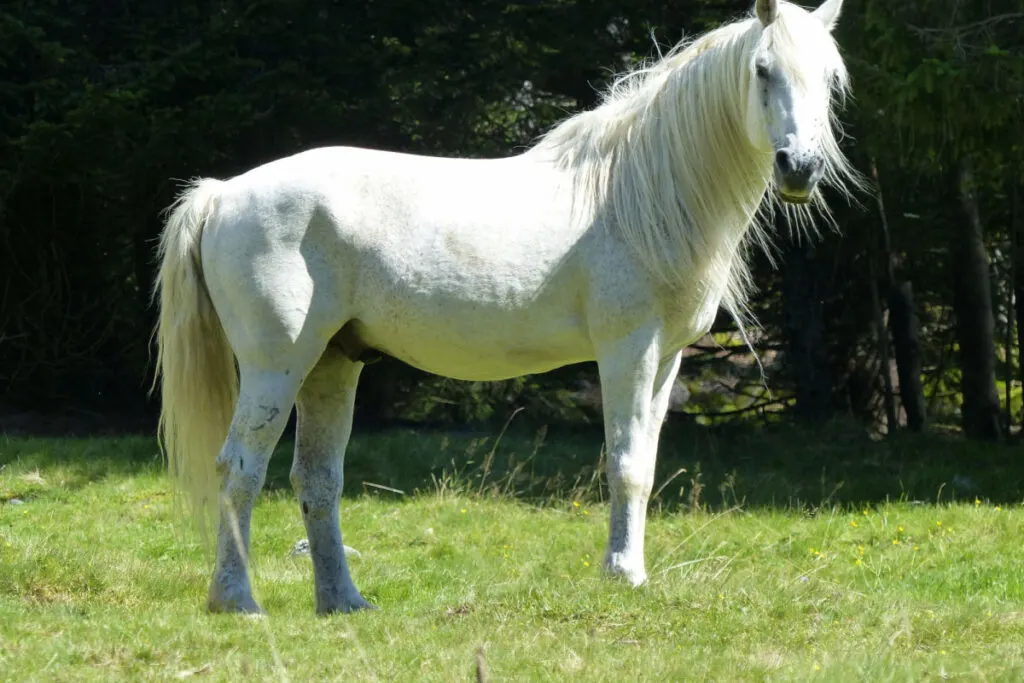
Eventually, careful breeding of sturdy, athletic white horses produced the Lipizzan breed as we know it today.
3. The breed is a national symbol of Slovenia.
Austrian royals Maximilian II and Archduke Charles I brought fine Spanish horses to Austria and established stud farms at Kladrub (in modern-day Czech Republic) and Lipica (in modern-day Slovenia).
Kladrub horses (also called Kladrubber) were bred to be elegant but heavy coach horses, and the breed still exists today.
Lipizzans were bred to be light riding horses, trained for use by royalty. Slovenian stud farms still send Lipizzan horses to the Spanish Riding School to be trained in the art of classical dressage.
Slovenia is very proud of the fact that they are the birthplace of these famous high-flying horses, and declared the Lipizzan breed a national symbol of Slovenia. (source)
4. Lipizzan horses are quite rare.
It can be difficult to find a purebred Lipizzan in the United States, despite how recognizable they are throughout the world.
Breeding requirements for the best horses are strict, and there are only an estimated 11,000 purebred individuals left. It’s quite a rare opportunity to see them in person! (source)
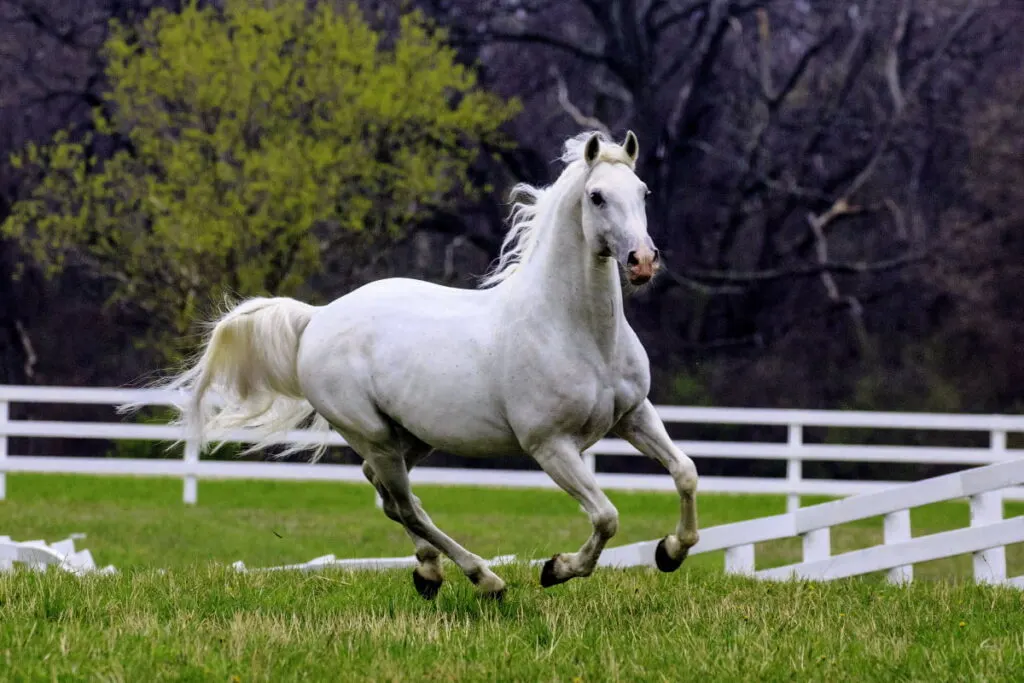
5. They’re not technically white.
While they may look pure white to the untrained eye, most Lipizzans are various shades of gray.
They originally appeared in a variety of different colors (including pinto!), but today they are mostly known for their striking light-colored coats.
6. A dark Lipizzan is good luck.
Most Lipizzans are born brown, black, or a mousy gray that lightens over time. Many of them will not reach their final lightest shade until they are ten years old.
Even though most of the stallions at the Spanish Riding School are grays, it’s tradition to keep one brown Lipizzaner in the stable at all times – it is thought to bring good luck!
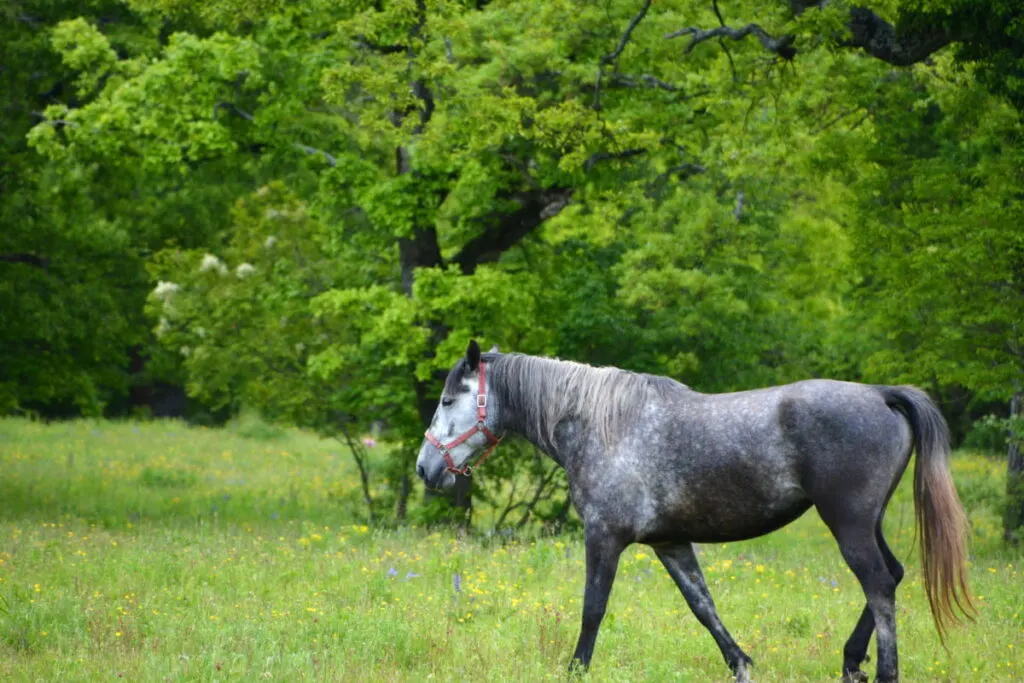
7. The breed has strict naming rules.
Naming a Lipizzan foal can be a tricky business. Purebred Lipizzans must be named with a traditional pattern. All stallions have two names: the first for his sire, the second for his dam.
For example, the stallion Pluto Balorma is out of a stallion from the Pluto line (Pluto Bona, to be exact), and a mare named Balorma.
A mare’s name must end in an “a”, and may be followed by a Roman numeral to identify the individual horse in the case of a duplicate.
8. All modern Lipizzans are part of a dynasty.
Of all the fine Lipizzan stallions that contributed to the breed over the years, only six sire bloodlines remain.
All purebred Lipizzans can trace back their lineage to one of these stallion dynasties – Pluto, Conversano, Favory, Neopolitano, Siglavy, and Maestoso.
Most of these horses were born more than 200 years ago – which results in quite the long family tree! (source)
9. The breed almost faced extinction..
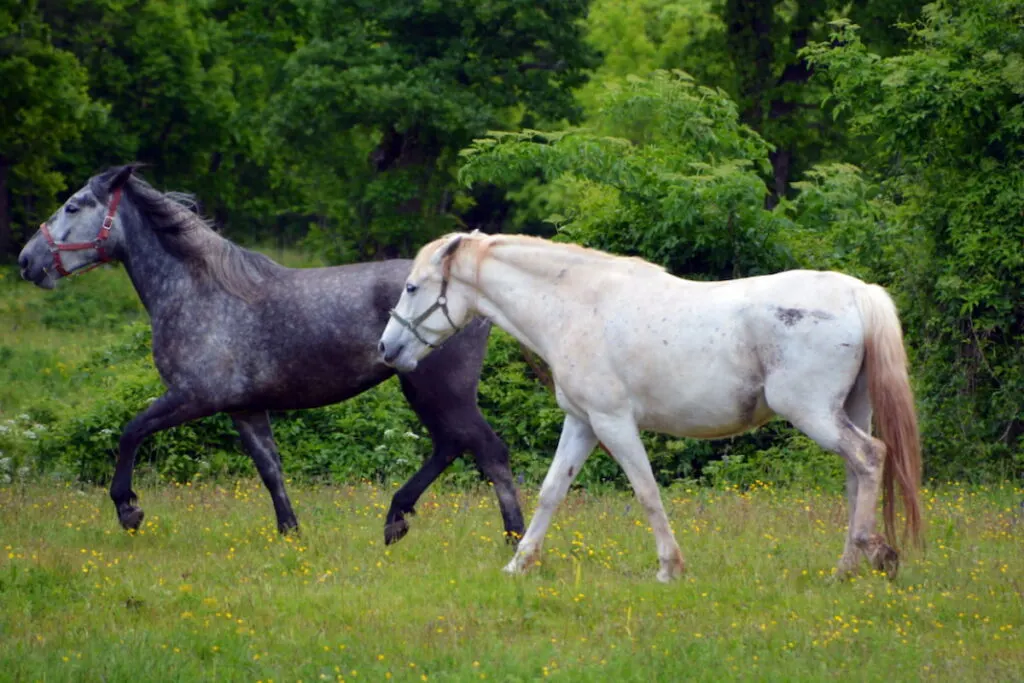
As the Germans advanced on Austria during World War II, the Lipizzaners at the Spanish Riding School performed for American General George Patton and his troops.
Worried that the invading German army would cause harm to the stallions, the academy’s director turned to the Americans for help.
General Patton and his troops put the stallions in the care of the US army, where they were protected and returned to Austria after the war.
The 1963 film Miracle of the White Stallions tells the story of General Patton’s role in saving the white Lipizzaners of Vienna.
The film was based on the autobiography “My Dancing White Horses” by Spanish Riding School Director, Colonel Alois Podhajaky.
10. They take a while to mature.
At the Spanish Riding School, Lipizzaners are trained slowly and carefully to make sure they’re fully ready for the rigors of haute ecole.
Many other breeds can be trained and ridden under saddle as young as three, but slow-growing Lipizzan stallions begin training at four years old.
It can take years of training to perform such difficult movements, and Lipizzaners are often considered “late-bloomers” – fully maturing around 7 – 10 years old. (source)
11. A Lipizzan can live an extra-long life.
Many horses are ready for retirement before they hit their late teens, but Lipizzans are often working well into their late twenties and even early thirties.
They’re hardy and strong, and they have hundreds of years of fine breeding and athleticism behind them, resulting in an exceptionally long-lived and hardworking breed.
12. They’re remarkably versatile horses.
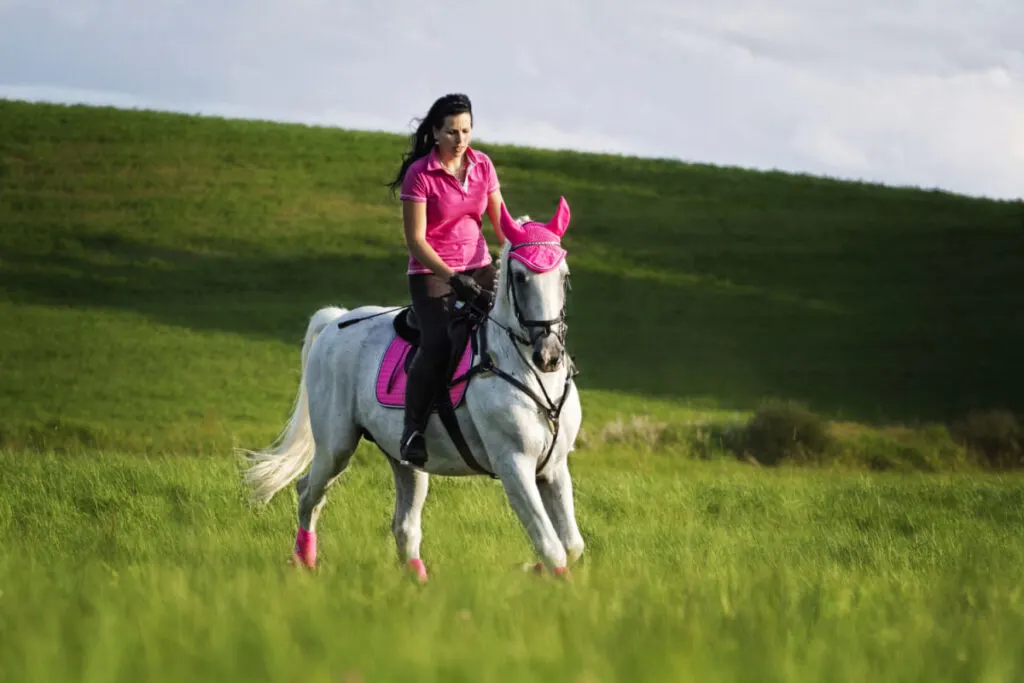
While they’re known for their high-flying moves, Lipizzans can also make excellent pleasure horses. They’re fairly easy to train, strong, and move with smooth, elegant gaits.
Because dressage tests a horse’s training and partnership between him and his rider, Lipizzans must be well-mannered and willing to work.
This makes them suited for other disciplines such as trail riding, driving, or even light jumping.
13. Lipizzaners may be smaller than you think.
Most warmblood breeds can grow quite large, but Lipizzans are relatively small.
They stand an average of 15 – 16 hands high, but may be as small as 14 hands at the withers. They have compact bodies and strong hindquarters, which more than makes up for their small statures.
14. They’re famous all over the world.
While the Spanish Riding School is one of the most well-known centers for Lipizzan excellence, it’s far from the only one. The South African Lipizzaners is a classical dressage riding academy in South Africa.
A small group of Lipizzans were rescued from a war-torn Europe after World War II, and brought to South Africa to establish a successful breeding and training program.
Today, a group of thirty-six stallions performs classical dressage and haute ecole for fans from all over the world at various events and celebrations. (source)
15. Tourists may visit their birthplace.
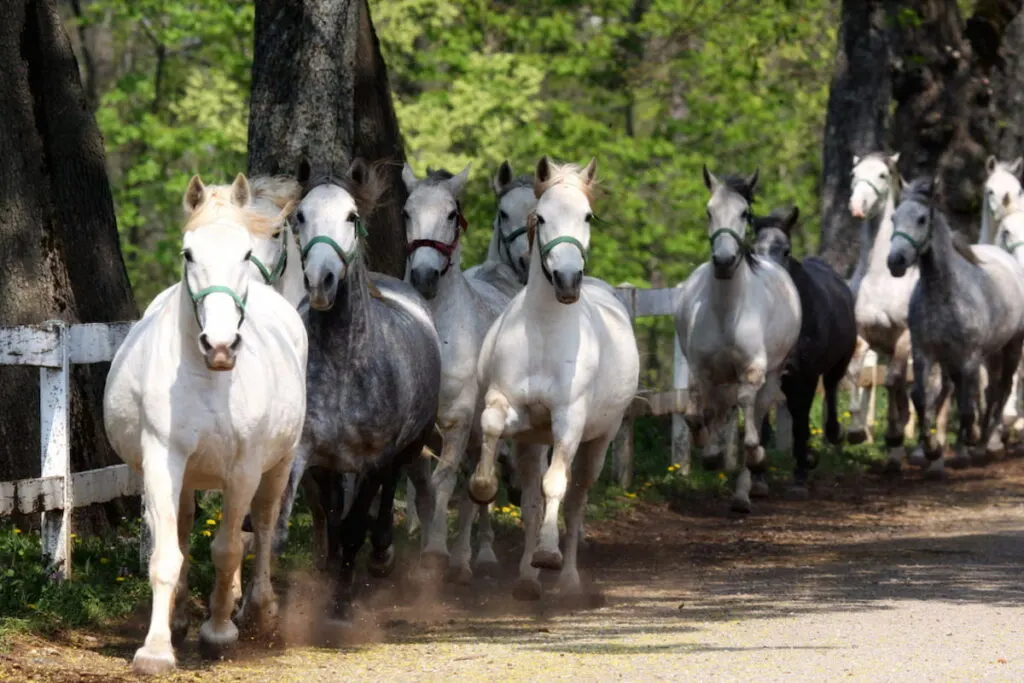
If you want to get up close and personal with Lipizzan horses, your best bet may be to take a trip to the Lipica Stud Farm in Slovenia.
While they may send their finest stallions to the Spanish Riding School in Vienna, they keep mares and geldings at the stud farm specifically for carriage rides, riding lessons, and educational purposes for tourists and other visitors to the farm. (source)
Additional Sources: Dutson, Judith. Storey’s Illustrated Guide to 96 Horse Breeds of North America. C. 2005
Resources
https://www.srs.at/en/lipizzaner-stud-piber/the-stud/the-lipizzaner/

